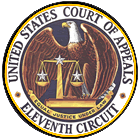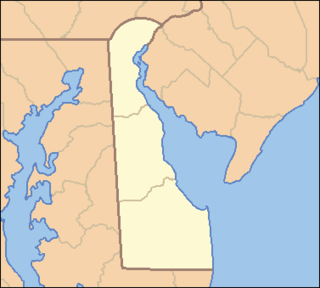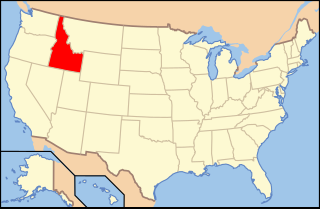
The United States courts of appeals are the intermediate appellate courts of the United States federal judiciary. The courts of appeals are divided into 13 "Circuits". Eleven of the circuits are numbered "First" through "Eleventh" and cover geographic areas of the United States and hear appeals from the U.S. district courts within their borders. The District of Columbia Circuit covers only Washington, DC. The Federal Circuit hears appeals from federal courts across the United States in cases involving certain specialized areas of law. The courts of appeals also hear appeals from some administrative agency decisions and rulemaking, with by far the largest share of these cases heard by the D.C. Circuit. Appeals from decisions of the courts of appeals can be taken to the U.S. Supreme Court.

The United States Court of Appeals for the Eighth Circuit is a United States federal court with appellate jurisdiction over the following United States district courts:

The United States Court of Appeals for the First Circuit is a federal court with appellate jurisdiction over the district courts in the following districts:

The United States Court of Appeals for the Second Circuit is one of the thirteen United States Courts of Appeals. Appeals from the second circuit are heard by the Supreme Court of the United States. Its territory comprises the states of Connecticut, New York and Vermont. The court has appellate jurisdiction over the district courts in the following districts:

The United States Court of Appeals for the Third Circuit is a federal court with appellate jurisdiction over the district courts for the following districts:

The United States Court of Appeals for the Fourth Circuit is a federal court located in Richmond, Virginia, with appellate jurisdiction over the district courts in the following districts:

The United States Court of Appeals for the Fifth Circuit is a federal court with appellate jurisdiction over the district courts in the following federal judicial districts:

The United States Court of Appeals for the Sixth Circuit is a federal court with appellate jurisdiction over the district courts in the following districts:

The United States Court of Appeals for the Seventh Circuit is the U.S. federal court with appellate jurisdiction over the courts in the following districts:

The United States Court of Appeals for the Tenth Circuit is a federal court with appellate jurisdiction over the district courts in the following districts:

The United States Court of Appeals for the Eleventh Circuit is a federal appellate court over the following U.S. district courts:

The United States Court of Appeals for the District of Columbia Circuit is one of the thirteen United States Courts of Appeals. The D.C. Circuit has the smallest geographical jurisdiction of any of the U.S. courts of appeals, and it covers only one district court: the U.S. District Court for the District of Columbia. It meets at the E. Barrett Prettyman United States Courthouse in Washington, DC.

The United States District Court for the District of Arizona is the U.S. district court that covers the state of Arizona. It is under the United States Court of Appeals for the Ninth Circuit.

The United States District Court for the District of Colorado is a federal court in the Tenth Circuit.

The United States District Court for the District of Delaware is the Federal district court having jurisdiction over the entire state of Delaware. The Court sits in Wilmington. Currently, four district judges and five magistrate judges preside over the court.

The United States District Court for the District of Montana is the United States District Court whose jurisdiction is the state of Montana. The court is located in Billings, Butte, Great Falls, Helena and Missoula.

The United States Court of Appeals for the Federal Circuit is one of the 13 United States court of appeals. It has special appellate jurisdiction over certain categories of specialized cases in the U.S. federal court system. Specifically, it has exclusive appellate jurisdiction over all U.S. federal cases involving patents, trademark registrations, government contracts, veterans' benefits, public safety officers' benefits, federal employees' benefits, and various other types of cases. The Federal Circuit has no jurisdiction over criminal, bankruptcy, immigration, or U.S. state law cases. It is headquartered at the Howard T. Markey National Courts Building in Washington, DC.
Senior status is a form of semi-retirement for United States federal judges. To qualify, a judge in the federal court system must be at least 65 years old, and must have served for at least 15 years. As long as senior judges carry at least a 25 percent caseload or meet other criteria for activity, they remain entitled to maintain a staffed office and chambers, including a secretary and their normal complement of law clerks, and they continue to receive annual cost-of-living increases. The president may appoint new full-time judges to fill the vacancies in full-time judgeships caused by senior status.

The Federal Judicial Center is the education and research agency of the United States federal courts. It was established by Pub. L.Tooltip Public Law 90–219 in 1967, at the recommendation of the Judicial Conference of the United States.

The United States District Court for the District of Idaho is the Federal district court whose jurisdiction comprises the state of Idaho. Court is held in Boise, Coeur d'Alene, and Pocatello. Cases from the District of Idaho are appealed to the United States Court of Appeals for the Ninth Circuit.


















